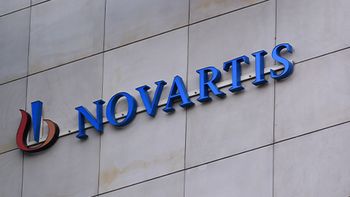
- Pharmaceutical Executive-06-01-2003
On Autopilot
My train reading this week has been Protecting America's Health, Philip J. Hilts' enlightening history of the Food and Drug Administration. It's a book with a strong sense of how politics, people, and the uncontrollable flow of events conspire to shape institutions. It's also a good read, thanks to the author's fine eye for anecdote. Over and over, Hilts selects just the right story to capture the essence of an era in the agency's history.
My train reading this week has been Protecting America's Health, Philip J. Hilts' enlightening history of the Food and Drug Administration. It's a book with a strong sense of how politics, people, and the uncontrollable flow of events conspire to shape institutions. It's also a good read, thanks to the author's fine eye for anecdote. Over and over, Hilts selects just the right story to capture the essence of an era in the agency's history.
Perhaps the most striking of these tales concerns an antibiotic called Panalba, which was doing a brisk business in the late 1960s, when FDA finally got around to requiring existing drugs to prove their safety and efficacy. The problem was that Panalba was neither safe nor efficacious. The drug was a combination of two antibiotics, tetracycline and novobiocin. Not only did the novobiocin cause adverse effects in 20 percent of patients, it also counteracted the tetracycline. The company's own research said so.
FDA wanted Panalba off the market. But the manufacturer, which depended on the product for more than 10 percent of its revenue, fought back with doctors' testimonials, the backing of the American Medical Association (which saw efficacy testing as an attack on physicians' autonomy), and Nixon-era political hardball. The drug was ultimately withdrawn, though it cost FDA Commissioner Herbert Ley his job.
Times change, of course. Looking back 30 years later, it hardly seems credible that the company fought so hard to keep a dangerous drug on the market. A while after the event, a Wharton professor named J. Scott Armstrong surveyed students and business people, asking what they thought of the company's actions. Ninety-seven percent called the company irresponsible. But then, Hilts explains, Armstrong tried a different approach. He led an exercise in which students played the role of company directors. An odd thing happened. Eighty percent of the role players did exactly what the company had done. And so did close to 2,000 other subjects when the experiment was repeated 90 times in ten countries. Outraged citizens became co-conspirators in the blink of an eye.
Hilts' take on the experiment is clear from the title he gives the chapter devoted to it: "Greed and Goodness." I think perhaps he's being too simplistic. To me, Armstrong's experiment wasn't about people turning greedy. It was about people doing what they thought was expected of them-decision making on autopilot. And the lesson to take away is not that people are callous, but that it can be hard to tell when you're making up your own mind and when you're playing yes-man to the brass plaque on your door.
That's useful to know. For most of us who lead organizations, the power to make decisions is the crucial part of our jobs. We're willing to fight colleagues or even bosses who threaten it. What Armstrong shows us is that we also need to fight against the autopilot-and that if we don't the results can be disastrous. History has a habit of repeating itself.
We need to make sure that this particular bit of history doesn't.
Patrick Clinton, Editor-in-Chief
Articles in this issue
over 22 years ago
Picking a Place to Growover 22 years ago
Pfizer Can Mold Its Future by Learning from the Pastover 22 years ago
Reputation: The Inside Storyover 22 years ago
Good Recruitment Practice = Patient Pullover 22 years ago
Networked Pharmaover 22 years ago
Table of ContentsNewsletter
Lead with insight with the Pharmaceutical Executive newsletter, featuring strategic analysis, leadership trends, and market intelligence for biopharma decision-makers.




